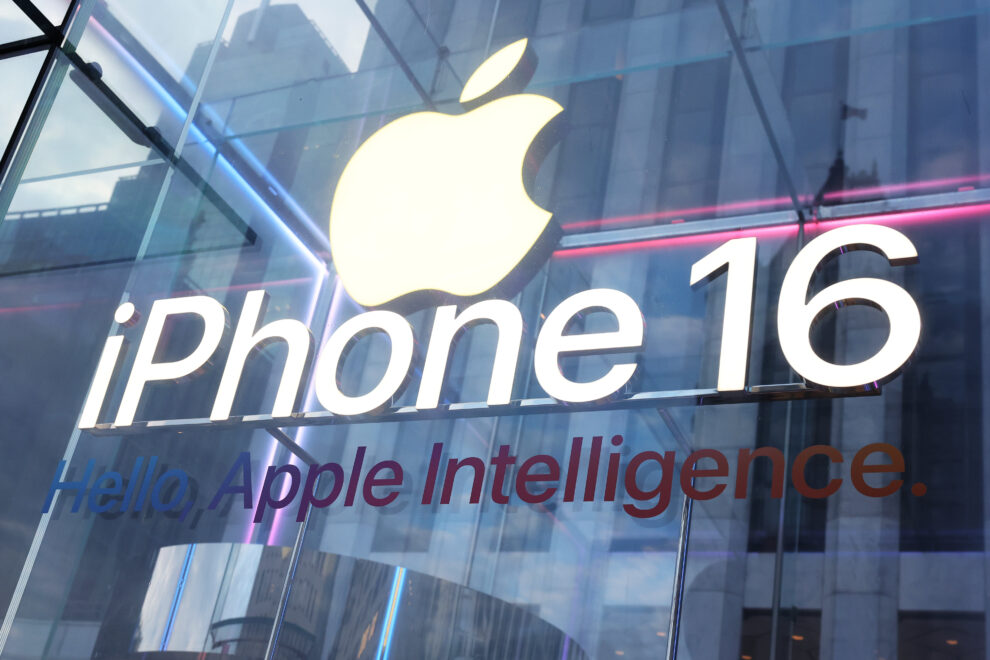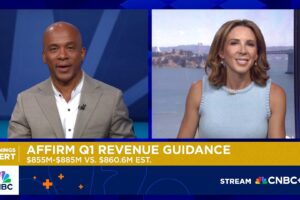
Apple late Thursday delivered a quarter that can only be described as much better than feared. It wasn’t perfect, but it was pretty darn good. Revenue in Apple’s fiscal 2024 fourth quarter, which ended in September, grew 6% year-over-year to a September quarter record of $94.93 billion – outpacing the LSEG estimate of $94.58 billion. Adjusted earnings per share advanced 12% to $1.64 –edging out LSEG’s estimate of $1.60. It’s worth noting that Apple usually doesn’t report on an adjusted basis, however, due to a one-time income tax charge of $10.2 billion resulting from the reversal of the European General Court’s state aid decision, the company opted to provide a reconciliation of this and report the adjusted result, which is what Wall Street will grade the quarter on. Apple Why we own it: Apple’s dominant hardware and growing services businesses provide a deep competitive moat and plenty of bundling opportunities. Management’s net cash neutral strategy provides confidence that free cash flow will continue to fund dividends and buybacks. There’s a reason it’s one of only two “own it, don’t trade it” stocks in the portfolio. Competitors: Samsung, Xiaomi, OPPO, Dell and HP Inc. Most recent buy : April 8, 2014 Initiation : Dec. 2, 2013 Bottom line We are once again reminded why it doesn’t pay to try to game Apple’s quarterly release. For all the fear-mongering we have had to contend with over the past few weeks about just how horrendous this print was going to be, it ended up being a September quarter sales record for the world’s greatest consumer technology company. On the post-earnings call, outgoing CFO Luca Maestri said, “We grew in the vast majority of the markets we track and achieved September quarter revenue records in the Americas, Europe and Rest of Asia Pacific.” Americas rose 3.9% to $41.66 billion, a tad below estimates. Europe and Rest of Asia Pacific grew and beat expectations. Rest of Asia Pacific is an Apple geographic designation for the region outside Japan and Greater China. Japan grew and beat in the quarter, while Greater China fell 0.3% to $15.03 billion, coming up nearly $1 billion short of expectations. As always, we were pleased to hear that Apple’s installed base of active devices reached yet another all-time high across all products and geographic segments. This is a far more important factor than how many devices are sold in a given quarter. The key to Apple’s success isn’t how many devices it can sell in a three-month period but rather how well it does at increasing the lifetime value of its customers over time. Once Apple sells a device to someone new to the product suite it sets them up to sell more first-time items – it likely starts with an iPhone but half or more of Mac, iPad, and Apple Watch buyers in the quarter were new to the platforms. But that’s just the start of drawing them ever deeper into the ecosystem, and the deeper you get, the higher the switching costs become. We expect that to be even more true going forward as Apple Intelligence is further built out – more features will be added in December. While the hardware sales are certainly profitable, they pale in comparison to the profitability of Apple’s Services. They are however the gateway through which those Services are sold, so a growing installed base is a very important sign of future earnings growth. Regarding interest in Apple Intelligence, the company’s answer to AI, we believe it will boost the iPhone upgrade cycle over time. Since the AI features were just released in an operating system update, the data so far is limited. The team did note, however, on the call that in the first three days of iOS 18.1 being launched adoption rates have been twice as fast as what we saw for the iOS 17.1 release. It’s early but clearly users are excited about what Apple Intelligence will mean for the iPhone and eager to try it out. AAPL YTD mountain Apple’s year-to-date stock performance. Yes, Apple shares were down nearly 2% in after-hours following a similar decline in Thursday’s rough regular session for tech stocks. But we think these results, once again, demonstrate that there is a whole heck of a lot more money to be made over the long-term by owning Apple stock, rather than trying to jump out every three months to try to avoid the next pullback and time the jump back before the next rally. It’s impossible to do consistently, and that’s why Jim Cramer always says “own, don’t trade” Apple stock. While maintaining our wait-for-a-pullback 2 rating for the time being, we’re increasing our price target to $250 per share from $240 as we look ahead to Apple’s next fiscal year, which we believe will be a very exciting one as Apple Intelligence, in the words of CEO Time Cook, “marks the beginning of a new chapter for Apple innovation,” and represents the “beginning a new era for iPhone.” Our new price target implies 10.7% upside from Thursday’s close. Commentary On a companywide basis, cost of sales and SG & A (selling, general and administrative) expenses were a bit high but that’s to be expected when sales outpace expectations. More importantly, Apple’s overall gross margin and its operating income margin were both stronger than expected. Mac, iPad, Wearables, and Services sales were all a bit short, but within two percentage points of expectations, and were more than offset by the strength in iPhones. Moreover, gross income outpaced expectations for both the overall Products category as well as the Services segment. Product gross margin was a hair short of expectations, however, was more than offset by a very strong gross margin in Services. While overall cash flow came in a bit short, it does mark a September quarter record for operating cash flow. Apple has a policy of being net cash neutral over time, meaning that if the cash isn’t used for acquisitions or organic growth investments, it is returned to shareholders through buybacks and dividends. During the reported quarter, Apple returned over $29 billion to shareholders, including $3.8 billion in dividends and equivalents and another $25 billion via the repurchase of 112 million shares. The company exited its fiscal Q4 with roughly $157 billion in cash, equivalents, and marketable securities on the balance sheet. After subtracting $107 billion of debt, we’re left with a net cash position of about $50 billion. Products On the call, Maestri said something that was music to our ears: “Our installed base of active devices reached an all-time high across all products and geographic segments, thanks to very high levels of customer satisfaction and loyalty and a large number of customers who are new to our products.” iPhone sales achieved a September quarter record and achieved an all-time high installed base in every geographic segment, with the CFO noting that according to survey work from Kantar, the “iPhone was the top-selling model in the U.S., urban China, the U.K., Australia and Japan.” Services The segment hit an all-time quarterly revenue record. Though Services sales missed the mark, gross income managed to outpace expectations thanks to significant year-over-year margin expansion. “We saw broad-based strength around the world, reaching records in both developed and emerging markets, with double-digit growth and record results across most services categories,” noted Maestri. The growing installed base of active devices is of course translating into strong engagement with Apple’s services. The CFO said, “Both transacting accounts and paid accounts reached a new all-time high with paid accounts growing double digits year over year. Paid subscriptions also grew by double digits. We have well over 1 billion paid subscriptions across the services on our platform, more than double the number we had only four years ago.” Guidance December quarter (fiscal 2025 first quarter) guidance assumes no worsening of the macroeconomic outlook. Total revenue in fiscal Q1 is expected to increase grow at a low-to-mid-single digit rate – the Street was looking for 7% year-over-year top-line growth. Services revenue is expected to increase at a double-digit rate in line with what we saw for fiscal 2024, which was about 12%, right in line with expectations. Gross margin is projected to be between 46% and 47%, better than the 46.1% estimate, at the midpoint. Operating expenses are forecast in a range of $15.3 billion to $15.5 billion, a bit higher than the $15.32 billion estimate. (Jim Cramer’s Charitable Trust is long AAPL. See here for a full list of the stocks.) As a subscriber to the CNBC Investing Club with Jim Cramer, you will receive a trade alert before Jim makes a trade. Jim waits 45 minutes after sending a trade alert before buying or selling a stock in his charitable trust’s portfolio. If Jim has talked about a stock on CNBC TV, he waits 72 hours after issuing the trade alert before executing the trade. THE ABOVE INVESTING CLUB INFORMATION IS SUBJECT TO OUR TERMS AND CONDITIONS AND PRIVACY POLICY , TOGETHER WITH OUR DISCLAIMER . NO FIDUCIARY OBLIGATION OR DUTY EXISTS, OR IS CREATED, BY VIRTUE OF YOUR RECEIPT OF ANY INFORMATION PROVIDED IN CONNECTION WITH THE INVESTING CLUB. NO SPECIFIC OUTCOME OR PROFIT IS GUARANTEED.
An iPhone 16 signage is seen on the window at the Fifth Avenue Apple Store on new products launch day on September 20, 2024 in New York City.
Michael M. Santiago | Getty Images News | Getty Images
Apple late Thursday delivered a quarter that can only be described as much better than feared. It wasn’t perfect, but it was pretty darn good.









